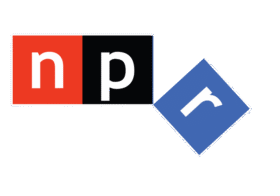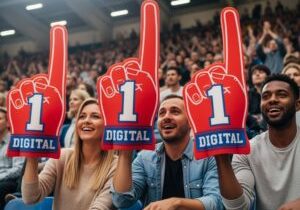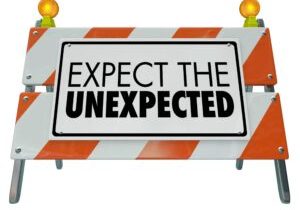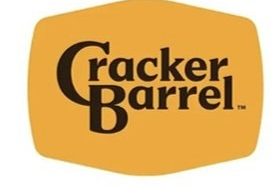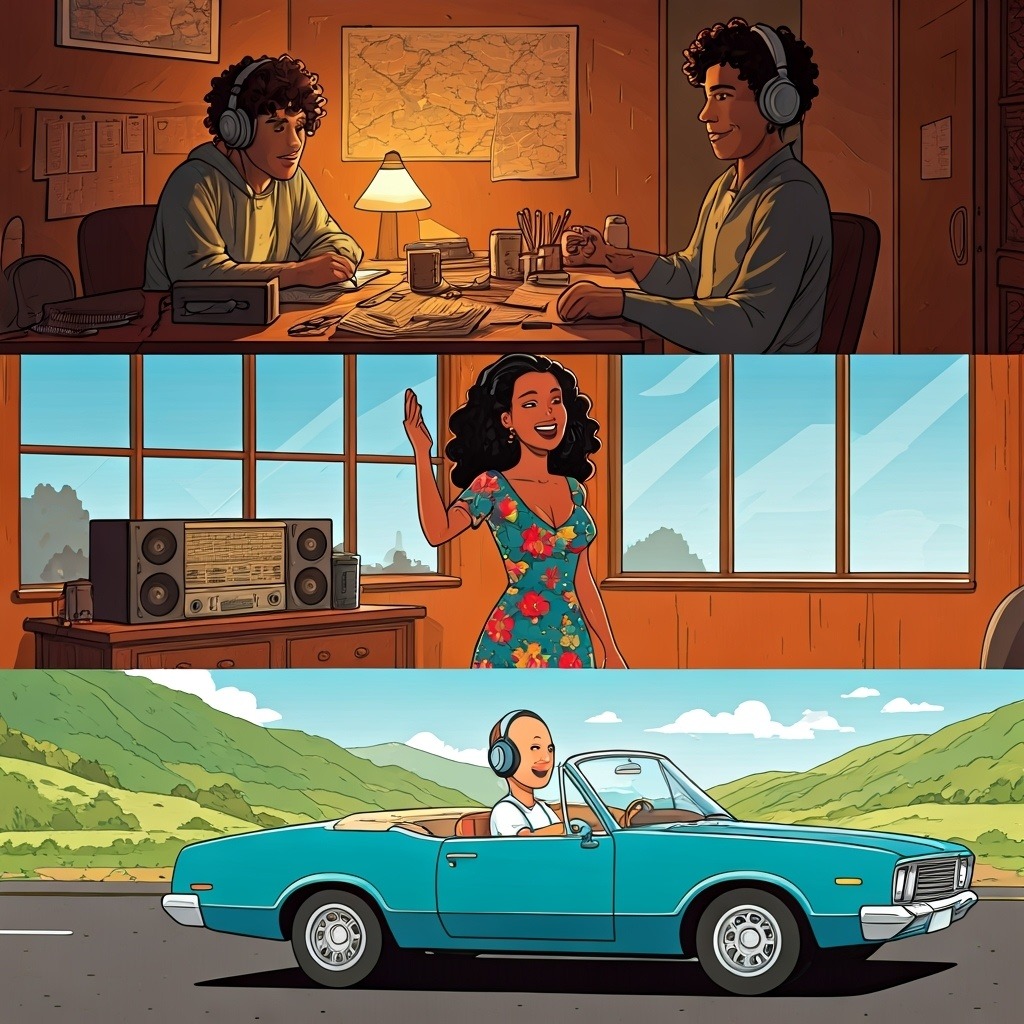
Location, location, location
Whether you’ve been in radio for 50 years like me or you’ve only worked in the business for a hot minute or two, one thing is a constant:
You are taught to think about listening locations first, and possibly situations next. Whether you’re a programmer or you’re on-air talent, the common denominator is picturing where your listeners are and what they’re doing. Dayparts play a role here, too, because of the conventional radio wisdom that large portions of a station’s audience are engaged in similar activities in the same time frame.
For example, there’s the audience at work, playing a radio station either background or foreground, played over speakers or perhaps consumed by workers wearing headphones or AirPod-like devices. A key reason for this radio listening strategy is driven by Nielsen (and formerly, Arbitron), especially in its diary markets. In fact, the entire layout of the diary fits this pattern of day, time, and location.

During radio’s pre-PPM heyday, listening location became a central part of most stations’ messaging strategies. The idea was to connect common listening settings to remind listeners—or better put, diarykeepers—into recalling where they listen with the goal of amassing as many quarter-hours of listening as possible.
One of the best practitioners of this programmatic art was Marty Bender. When programming a multi-faceted station like Q95 in Indianapolis (Bob & Tom, music, personality, etc.), clever, consistent location reminders were all over the air and even on outdoor advertising. Because the diary methodology is largely powered by recall, these messages became essential tools.
Over the air, the legal ID was often this (or something similar):
WFBQ, INDIANAPOLIS
AT HOME…
AT WORK…
AND WHILE YOU DRIVE…
IT’S GOTTA BE 95
And similar messaging became regular reinforcements in outdoor advertising, reminders of listening behavior driven by location:

The modern-day equivalent is the concept of “meeting the audience where they are,” another way to remind audiences of the different ways people can listen to a radio station in 2025. In this way, we often think of devices rather than location.
These days, a working AM and/or FM radio in the home front is much less common that it once was. So many stations have gone to great lengths to remind listeners they are accessible on any number of devices: mobile apps via smartphones and tablets, smart speakers, as well as desktop and laptops.
Here’s a web ad created by ALT 94/9 in San Diego, linking platforms with station personalities:
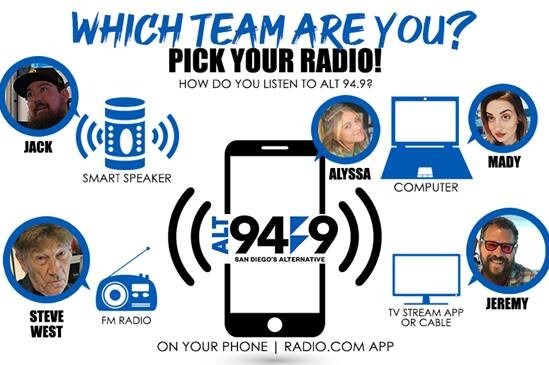
This method works well as long as there are enough employed air staffers to connect with listening platforms. Spirit Catholic Radio, broadcasting out of Nebraska, boasts 11 different ways to listen:
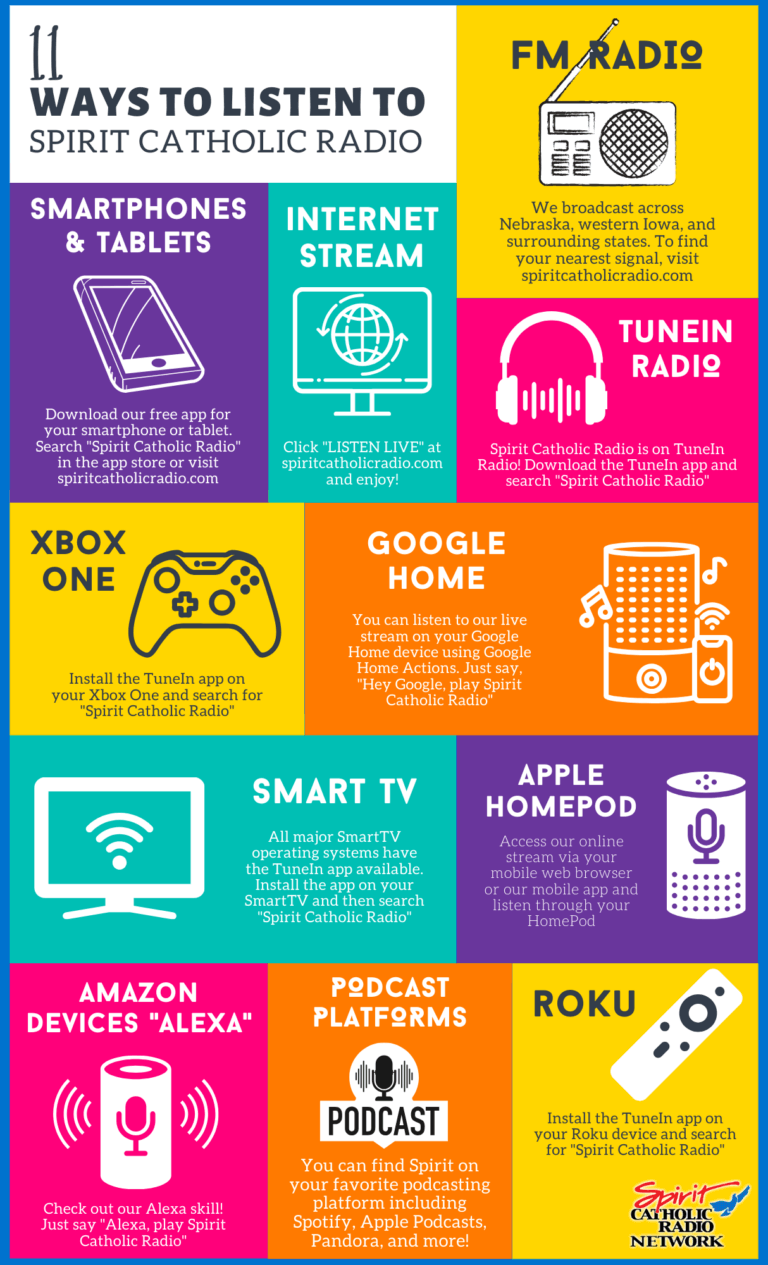
Clearly, first location and later device or platform have been integral components in the way stations communicate when, where, and how to listen.
But what of the emotional elements that play a foundational role in not only how people listen, but what motivates them to do so—the “WHY?” of radio listening.
That’s the essence behind one of the key charts in Jacobs Media’s more than 40 Techsurveys across the commercial, public, and Christian music spectrums. The chart below is from this year’s commercial radio Techsurvey, made up of more than 24,000 core radio listeners across the U.S. and Canada: 
The red bars, accompanied by the red circle “e’s” (symbol for “emotion”) provides data on the motivations that drive why they enjoy listening to the radio—that is, how radio makes them feel. While favorite personalities and music dominate the list, it is these emotional underpinnings that separate radio from other media.
In recent years, social media linguists have coined the phrase, “the feels,” for that rush of emotion that accompanies some type of moving experience. “All the feels” is the umbrella term that sums up the spectrum of emotions (mostly positive ones):

But the forerunner to “the feels” was a term coined in the 1960s by Beach Boy founder and creative genius, Brian Wilson, who passed away last month. His classic, “Good Vibrations,” transcended the Billboard charts to become a lifestyle term that resonates today. “Vibrations” was shortened to just “vibes,” a term that sums up where you are at the moment or where you aspire to be.
You see vestiges all over social media, as users display photos or upload videos to describe their current “vibe.” It also has become a popular message on clothing that provides info about one’s emotional status of the moment.

And that’s precisely the vibe (sorry) brands are trying to exude with the marketing of their products and services. It is not just about the vehicle you drive or the activity you’re engaged in at the moment. It is how the brand makes you feel or aspires to make you feel.
So, what does this look like in “real life,” for a product or service aiming to capture a vibe?
Let’s take Lincoln, for example, one of many luxury SUVs you may or may not opt to have in your driveway. What makes one of their vehicles different or even better than similar products from BMW, Audi, or Cadillac?
Vibe, of course.
For the last few years, Lincoln has interwoven the term “sanctuary” into their marketing efforts, both to showcase its cabin features, but also the feeling you get when you’re behind the wheel.
The vibe.
During COVID, “sanctuary” was more about getting away from the tumult of your family. Today, it’s more about serenity and escape, while still retaining the “sanctuary” branding, with a nod to The Police.
Now Lincoln is taking its vibe to audio, specifically via a collaboration with the Calm app. The goal? In-vehicle meditation content, befitting the “sanctuary” vibe Lincoln is going for.
A story last week in MediaPost by Tanya Gazdik explains how Calm’s “Elevated Journey App” has been designed to provide audio that supports “mindfulness while driving” for Lincoln owners. The sessions, narrated by a meditation teacher, have a duration of 5 to 12 minutes. Shorter segments can also be selected.
The Lincoln Nautilus extends the vibe with Rejuvenate 2—a non-driving experience provided by the vehicle. It is described as “a stationary, multisensory experience that transforms the vehicle into the ultimate retreat using sight, sound, touch, and scent to help drivers recharge while parked during long trips or after a busy day at the office.”
So much for 0-60 speeds and braking distances. For Lincoln, it’s the “sanctuary” vibe.
 Not to be outdone, YouTube is looking for ways to stand out in the audio streaming area. In a field crammed with players like Spotify, Pandora, Apple Music, Amazon Music and others, how can a brand’s music offerings stand out?
Not to be outdone, YouTube is looking for ways to stand out in the audio streaming area. In a field crammed with players like Spotify, Pandora, Apple Music, Amazon Music and others, how can a brand’s music offerings stand out?
Through vibes, of course.

via Soundcloud
They’re launching a curated channel comprised of music from the iconic deadmau5 label that recently cashed out with a catalog sale to the tune of $55 million. OK, that’s not Springsteen or Pink Floyd money, but it’s not too shabby for an electronic music franchise.
A new channel, in search of a definite “in the background vibe” has been curated by deadmau5 on YouTube. Aptly called “Airplane Mode,” the channel’s vibe mission is simply this:
“Whether you’re tuning in to tune out, or looking for the perfect background music to elevate your space, this 24/7 radio stream is your passport to deep vibes and low-altitude cruising. No turbulence, just pure vibes.”
The sample of “Airplane Mode” in the video below will get you in the right frame of mind. I put it on while editing this post, and it actually felt better than what I’m used to.
You can read more about the mau5trap phenomenon in this story from MusicTech.
And finally, a media strategy that reminds us that vibe is everything—especially when we’re talking weekend vibes versus how we feel about life during the Monday-thru-Friday slog.
Whether it’s music, news, or other content, why don’t more media brands create content tailored to the change vibe that settles in for most of us once Friday rolls in. That why The Economist, a magazine of substance, often focused on weekend reading.
According to Nieman Lab, The Economist team is now using their mobile app to respond to changing consumption patterns. While its customers may enjoy sitting down to read long-form articles during more leisurely, slow-paced Saturdays and Sundays, we all know weekday needs are much different as people hustle from job to family on a much tighter pace.
And yet, the app (and the website) don’t flex to the changing vibe over the weekend. Until now.
The Economist app on Monday-thru-Friday now leads with a new top bar that is branded “The World in Brief,” consisting of shorter pieces and videos. Economist president Luke Bradley-Jones explains the vibe:
“In the weekday experience, we tend to select shorter pieces that don’t require the same time commitment, whether you’re on a commute or a lunch break. (On weekends), we’re really leaning into that more immersive, slower consumer experience.”
So on Saturday and Sunday, “The World in Brief” is pushed down, while longer-form stories are elevated and emphasized, a very clever use of a mobile app to showcase content and changing usage patterns.
In the app screencaps below, a weekday is on the left, with a weekend day on the right. Note the juxtaposition of “The World in Brief” header (circled) in each.

Screencap via Nieman Lab
The news vibe. It’s why CBS Sunday Morning would never work on Thursday.
For radio, it’s about rethinking the basics—not just where are they when they listen but how is the content they choose going to match their lifestyle needs?
Their vibe. An increasingly important why consumers are selecting content. What is the vibe today, this week, right now in your market? How can your programming, host content, and production reflect that all-important vibe? This is yet another reason why markets and audiences are distinctly different.
Brands that recognize their vibe can show just how engaged and aligned they truly are.
You can shop for “Good Vibes” merch on Etsy here.
Originally published by Jacobs Media

